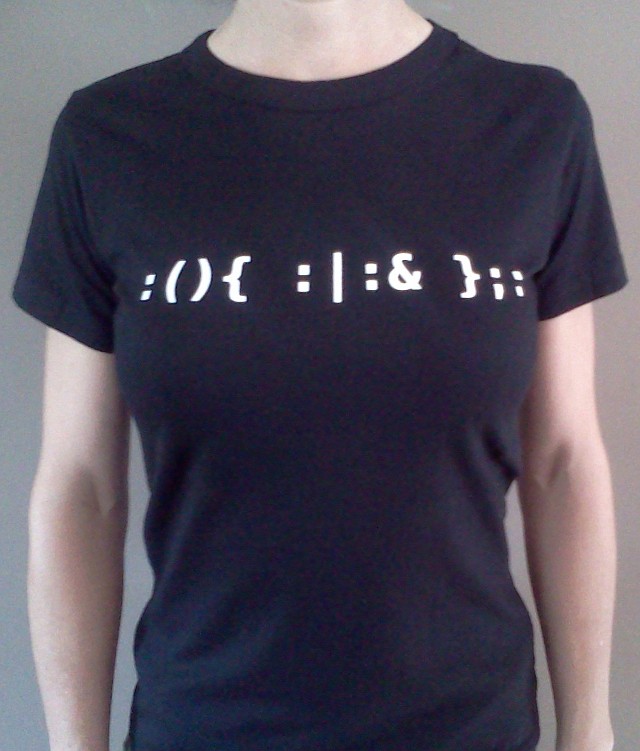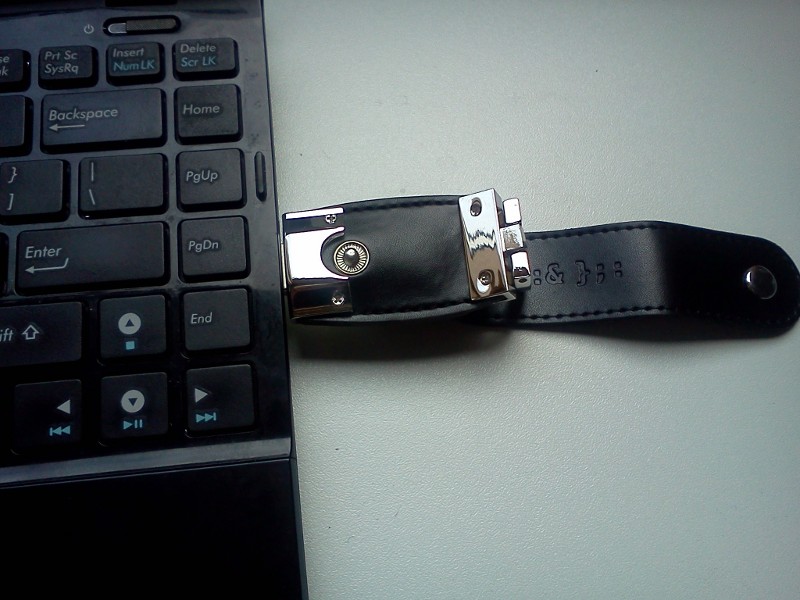From Camp 2011 Public Wiki
| ForkBomb | |
|---|---|
| Shell forkbombs for fashionable geeks, slick and minimal t-shirts and usb keyrings | |
| Contact | Jaromil, Dreamer, Debra |
| People | Dreamer, Jaromil |
| Village | Dyne |
Contents |
Atelier for geek elegance and electronic jewelry
This forkbomb is a kind of poetic virus.
If its visually attractive line of only thirteen characters is entered into the command line of a Unix system and the enter key is pressed, within seconds the computer will crash because the devious little program commands it to make multiple copies of itself, setting off a chain reaction and thus quickly exhausting the system’s resources.
The ultimate trend in geek elegance, with the forkbomb you are buying an artwork from its original author, while your money will support development of free speech software at dyne.org
These objects were for sale at the CCCamp. If you really want them you might be able to buy them online on dyne.org in a close future.
T-Shirts (Men's / Women's)
USB Storage keyrings (4GB)
Background Info
This shell forkbomb appeared in this article about Viruses, published in 2002, while it seems some other security experts knew about it before.
The shell forkbomb is regarded by software art critics as the most elegant forkbomb ever written, featured in the P0esis festival Berlin and in the ReadMe / RunME online software art exhibition among other places, here below a comment by Florian Cramer:
"Most computer operating systems can be crashed or at least brought to a grinding halt when users, even those without superuser privileges, launch an abundant ever-growing amount of programs that eat up all memory and CPU time. The easiest way to achieve this is a "forkbomb", a little program which does nothing but launch two or more copies of itself upon startup. Since these copies do the same in turn, this sets off a chain reaction with an exponentially growing number of processes. Forkbombs have been popular entertainment among hackers since about the mid-1990s, but jaromil manages to condense them to a most terse, poetic syntax, arguably the most elegant forkbomb ever written.
In other words, if you have access to the terminal prompt of a Unix-like OS, these twelve characters - which look like Internet smilies - can bring it down. It has become a secret code of recognition among the initiated, like the stuffed trumpet of the Tristero underground postal network in Thomas Pynchon's novel "Crying of Lot 49".
This example also reveals a problematic issue of the term "software art": That it is often misunderstood as high programm craftsmanship. In fact, this understanding has its roots in computer science itself. Donald Knuth's textbooks "The Art of Computer Programming" or Paul Graham's recent book "Hackers and Painters" are founded on a post-classicist notion of art as beauty and high craftsmanship, for example in the elegance of an algorithm."













